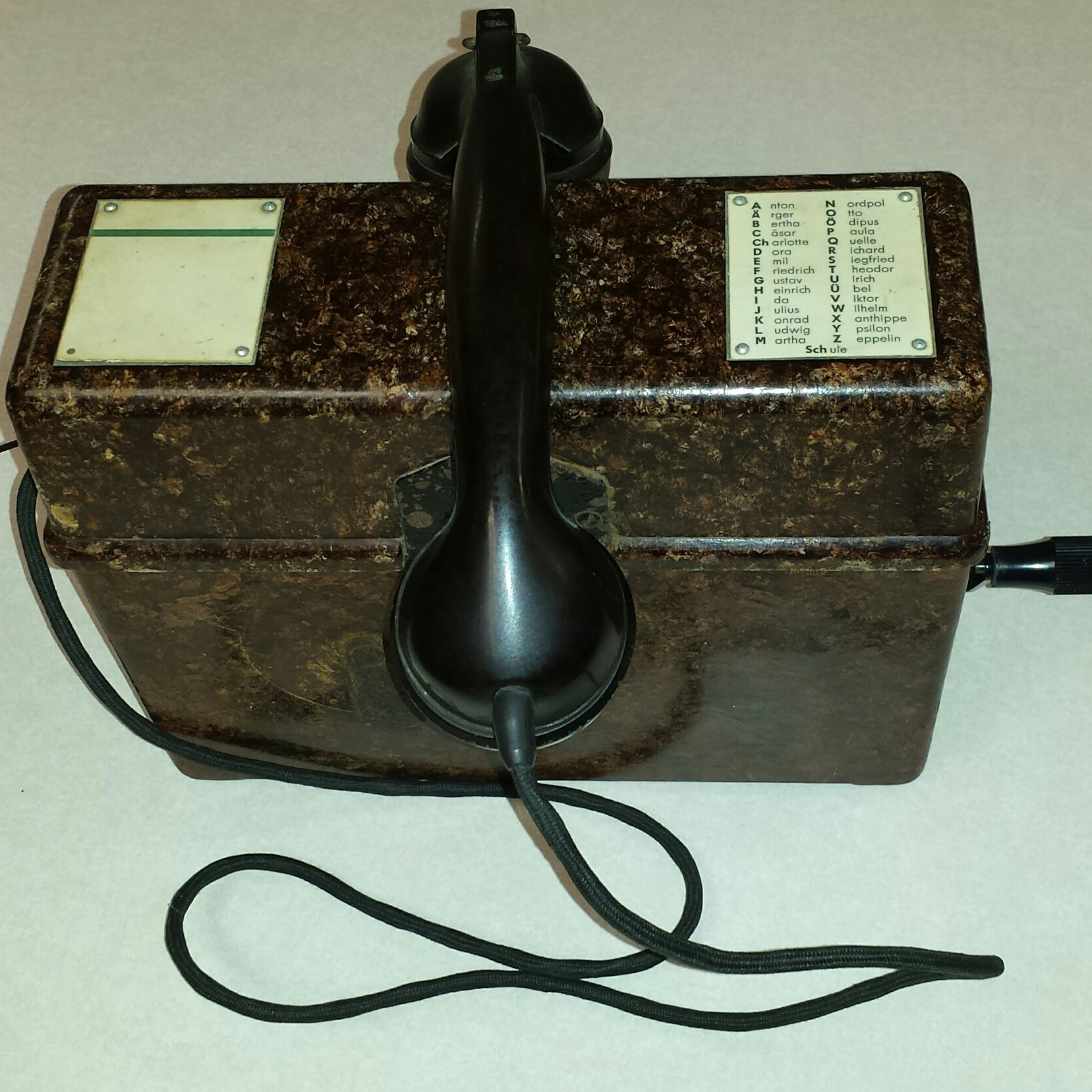During World War 2, was the German military field telephone system and the public telephone system one in the same? Well, sort of.

By the early 1930s, there were almost 10,000 kilometers of public telephone cables in Germany. Starting in 1932, the German government decided to modify the main public telephone network to include sub-networks for military use. These sub-networks together were called Störungsnetzen, or Command Networks. The Command Networks were to be constructed, operated, and maintained by the Deutschen Reichspost (DRP), or German Postal Service. The DRP operated the German public telephone network.
The decision to make the military telephone network a part of the public telephone network was probably driven by the Treaty of Versailles, which put limitations on the size of Germany’s military and its ability to grow into a threat. By making the Command Networks part of the public telephone network, the German military could grow without being noticed by the Allies.
The theory was that the Command Networks would only be required in the case of military necessity. The lines connecting these networks to the main public network were to be switched on after a trigger command. This command was to be transmitted by telex from the Inspectorate of the Signals Troops to the Reich Post Ministry. The switching procedures were laid down in special instructions that were part of the mobilization documents of the Deutsche Reichspost and were deposited with the Inspectorate and military operations offices.
The army (Heer) lines in the operations offices on the Command Network were to be code named Hektor, Otto, Georg, Viktor, Wanda, Grunewald, Adolf, Theo, Heinrich, Gregor, Bertha, Hermann, and Dora. The Command Networks were not only to be used by the army, but also by the high command of the air force (Luftwaffe). Their lines were to be code named Ludwig, Florian, Flunder, Lothar, Lukas, Waldemar, etc. The high command operations offices of the navy (Kriegsmarine) were to have lines with code names Martha, Maria, etc. In addition, Command Network lines were to be prepared for the Reich Ministry for Public Enlightenment and Propaganda with the code name Paula and the Gestapo to have the code name Gustav.
The number and rapid availability of Command Network lines required would have increased considerably with the build up of the Wehrmacht. As early as 1934, it was realized that this would put an ever-increasing load on the public telephone network and service would be adversely affected. Expansion of the telephone network had to be done with military considerations.
The Inspectorate of Signals Troops endeavored to integrate these military considerations into the expansion plans of the Reich Post Ministry. In practice, however, this effort proved to be ineffective. Military considerations conflicted more and more with the financial constraints of the DRP.
A report by the Reich Post Ministry drew to the attention of the Inspectorate of the Signals Troops that 28.5% of all long-distance transmission cables available to the DRP would be burdened by military traffic on the Command Network lines. The long-distance cable network had to be expanded with military considerations for both the public and military telephone networks to work.
The Inspectorate finally demanded that the DRP, with the participation of the Wehrmacht, set up a long-term expansion plan for the telephone cable network. This plan would represent the framework for the entire telecommunications traffic of the Reich. For each new telephone cable, a number of lines would be kept free for Wehrmacht purposes from the outset. The Wehrmacht would pay for these lines, which would not be available to the public network.
According to the plans of the army Inspectorate of Signals Troops, the DRP cables were to be included in special construction programs and financed with special funds that were to be paid from the Wehrmacht to the Reich Post Ministry in periodic installments. By the late 1930s, the German government was openly ignoring the Treaty of Versailles, so it really didn’t matter if the public and military telephone networks were kept separate.
By the outbreak of war in 1939, the German long-distance cable telephone network, was fully capable of supporting military and public traffic. The total length of lines within Germany was 27,500 kilometers. Although military and public traffic was on separate lines, there was an interconnection between the two networks. For example, it was possible for a soldier on the Eastern Front to telephone his wife in Germany during certain times of the day when demand was low.

Check out my new book on WW2 German field telephone equipment…https://www.lulu.com/en/us/shop/rotwang-manteuffel/world-war-2-german-field-telephone-equipment-a-basic-guide-for-reenactors-and-historians/paperback/product-976w9q.html?page=1&pageSize=4

